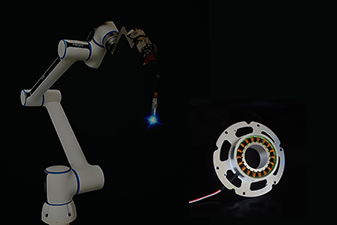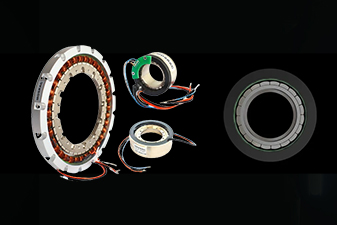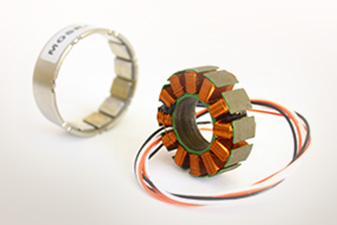In the fields of robotics, factory automation, and material handling, where precise placement is crucial, encoders play a very vital role. They are useful in systems because they offer instant position data upon startup. Single-turn and multi-turn are the two basic types of encoders. A rotating shaft's position can be determined by encoders in a single turn or over several turns.
The system requirements play a vital role for the selection between a single-turn and a multi-turn encoder. The most economical and efficient option is typically a single-turn encoder if the application calls for movements that take place within a single revolution. Multi-turn encoders are the better option, though, if tracking multiple revolutions with high precision is necessary. This is especially true if you need extra features like power-off tracking at a standstill.
MOSRAC provides single-turn and multi-turn absolute encoders in different shaft designs, such as blind hollow bore and thru-bore. They provide a range of bore diameters, signal options and resolutions.
In this article, we will provide a comprehensive understanding of single-turn vs. multi-turn encoders, including their differences, features, functionalities, advantages, and applications. This comprehensive overview will help you make an informed decision for choosing the right encoder between single-turn or multi-turn.
Difference Criteria between Single-turn and Multi-turn Encoder for Motor System
Definition:
▪︎ Single Turn Encoder:
Single-turn encoders use a single full revolution to track the shaft's precise position. The encoder resets to zero after the shaft has turned around one full revolution. This makes them perfect for systems that have little movement and whose rotation stays within a narrow range, like ±30 degrees.
▪︎ Multi-Turn Encoder:
A multi-turn encoder is basically a single-turn encoder that records longer linear movements, revolutions, and position changes that are greater than 360 degrees. Multi-turn encoders, as opposed to single-turn encoders, track the position within a single revolution besides counting the number of complete revolutions—a feature known as Turn Count. The number of turns increases when the angle position counter moves from 360 to 0 degrees and decreases when the counter moves from 0 to 360 degrees.
Applications where the number of turns exceeds one encoder turn frequently use multi-turn encoders. Most applications use a single-turn absolute encoder to monitor the number of revolutions incrementally.
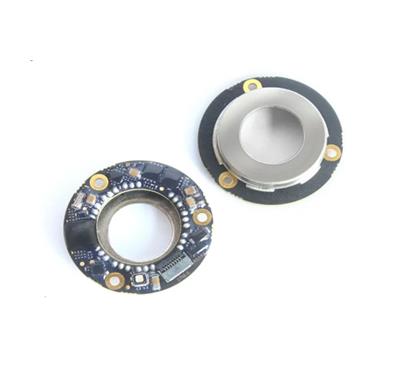
Figure 1: MOSRAC S-series Magnetic Encoder.
Features:
▪︎ Single Turn Encoder:
A: Limited Range:
Single-turn encoders measure angular positions within a single revolution (360 degrees). As a result, their accuracy is consistent within this limited range.
B: Absolute Positioning:
A single-turn encoder provides position feedback for rotations up to 360 degrees, or one full revolution. Upon finishing a complete rotation, the encoder resumes counting from the starting point. After one complete turn, it stops recording the position.
C: High Resolution:
Accurate position feedback is possible with single-turn encoders, which frequently offer a high resolution in a single revolution. Generally, the number of pulses per revolution (PPR) is applied to define resolution.
▪︎ Multi-Turn Encoder:
A: Extended Range:
Multi-turn encoders can count and track multiple full rotations up to several thousand revolutions. Position feedback is available over a far wider range of motion with multi-turn encoders. With every extra revolution, the accuracy might marginally deteriorate.
B: Absolute Positioning:
Multi-turn encoders provide absolute position feedback, including the number of full revolutions. This makes precise placement even in the event of a power outage.
C: Higher Precision:
For their whole range, multi-turn encoders might be more precise than single-turn encoders. However, careful calibration and change for variables like mechanical wear and environmental conditions are necessary to achieve this precision.
▪︎ Single-turn and Multi-turn:
A: Encoding Logic:
Shafts are encoded by single-turn and multi-turn encoders using two different kinds of logic. The first is basic binary code, in which every encoder contact reacts with either 1 or 0. A lot of controllers employ gray encoding logic.
B: Encoder Communication Protocols:
Single-turn and multi-turn encoders both output multi-bit words. Several common communication protocols are compatible with absolute encoders. Binary signals that use both voltage and current, field buses, serial, SSI, and parallel output are a few examples.
Functionalities:
▪︎ Single Turn Encoder:
The design of the inner operations of a single turn encoder provides reliable, precise position data within one full rotation of 360 degrees.At its core, this system comprises a coded disc that surrounds itself with distinct position values.
A sensor reads each distinct code on the disc as the shaft rotates, translating it into a digital output that shows the shaft's precise angle.A sensor reads each distinct code on the disc as the shaft rotates, translating it into a digital output that shows the shaft's precise angle.
Types:
The majority of single turn encoders use either magnetic or optical technology to function.
Optical Encoder:
In optical encoders, a light source illuminates or reflects coded patterns on the disc in optical encoders. A sensor detects the patterns, and each specific pattern matches with a unique position code.
Magnetic Encoder:
In contrast, magnetic encoders make use of magnetic fields produced by a magnetized disc. A sensor measures variations in the magnetic field as the disc rotates to find out its position.
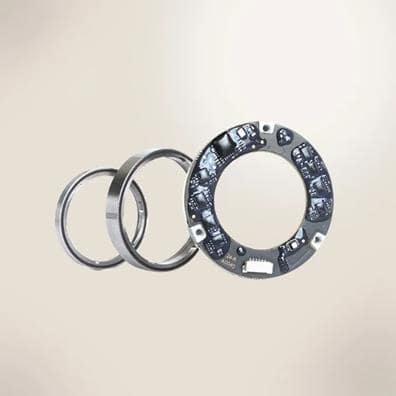
Figure 2: Dual Magnetic Encoder
▪︎ Multi-Turn Encoder:
The most basic type of multi-turn absolute encoder has two discs: a primary code disc for full rotations and a secondary code disc for ±360° monitoring. A sophisticated gearing system connects the two, indexing the secondary disc for each complete rotation of the primary disc.
Electronic counting and mechanical gearing are the two main techniques used by multi-turn encoders to track multiple rotations.
Mechanical Gearing:
Several internal gears connected to the encoder's main shaft make up mechanical multi-turn encoders. These gears increase a counter that records each complete turn as the shaft rotates. This technique is robust and efficient because it doesn't require electricity to store rotation data, especially in industrial settings.
Electronic Counting:
Electronic multi-turn encoders use electronic storage systems like non-volatile memory to count and store rotations. After a power outage, this configuration enables the encoder to preserve rotation data.
Measurement Principles of Encoders:
▪︎ Single Turn Encoder:
The magnetic sensor's main component is a Hall-effect sensor system, which uses the direction of a permanent magnet's magnetic field to calculate the shaft's angular position. The shaft has a permanent magnet attached to it, and its magnetic field penetrates the Hall sensor.
▪︎ Multi-Turn Encoder:
There are no gears or batteries needed for a Wiegand Effect-based energy harvesting system. The energy harvesting system produces brief, strong voltage pulses that provide enough power to the counting electronics in multi-turn encoders, regardless of the rotational speed.
Is a multi-turn encoder more accurate than a single-turn encoder?
Because multi-turn encoders can measure angular position after multiple rotations, they are
typically more accurate than single-turn encoders. Multi-turn encoders can produce an output
signal for every shaft position and measuring multiple rotation angles. They can count 4096
revolutions. 360-degree feedback is possible with single-turn encoders, but they only record
position once. Their measurement ranges from a single circle.
Depending on the application, a single-turn encoder accuracy can be just as remarkable as
that of a multi-turn encoder. Since the single-turn device's accuracy is already higher than
the system's overall accuracy, the encoder's accuracy frequently won't limit the system's accuracy.
Configuration:
Single Turn Encoder:
A: Components:
A single turn encoder has a rotating disc with a series of coding grids engraved on it. It measures the position of a shaft within a 360-degree rotation.
B: Operation:
As the object rotates, the sensor interacts with the encoded grid to measure the absolute position of the rotation.
C: Output:
The encoder assigns a unique digital code to each position.
D: Reset:
Once the encoder completes a full turn, it resets and cannot track additional rotations.
E: Limitations:
A single turn encoder can only measure angles within one revolution. If the shaft is turned by more than 360 degrees, the output characteristics will be equal to the first turn.
Multi-Turn Encoder:
A: Geared Multi-turn:
Geared multi-turn encoders keep track of how many revolutions the shaft makes. Generally, a geared multi-turn encoder follows optical or magnetic sensing measurement methods. The main advantage is that the encoder doesn't require a battery and can increase the number of turns when it's not powered on.
B: Battery Backup Multi-turn:
An internal incremental turn counter in a battery backup multi-turn encoder keeps track of the number of turns. An electronic counter for multiple turns is a feature of this kind of encoder. This eliminates the need for gearing and other mechanical parts.
C: Wiegand Sensor:
The Wiegand effect causes a coil wound around the wire to produce a brief but powerful energy pulse. Besides writing the data to non-volatile memory, this energy sets off the turn counter.
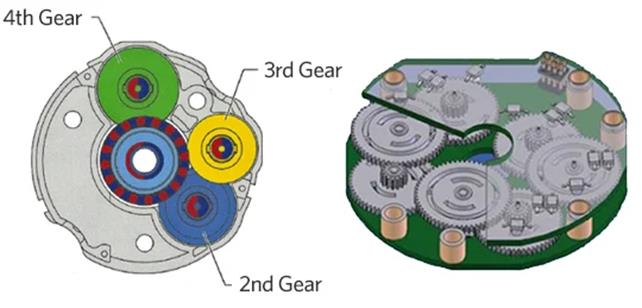
Image Credit Figure 3: Configuration of Multi-turn encoder (https://www.celeramotion.com/inductive-sensors/multiturn-encoder/)
What is Wiegand effect in multi-turn encoder?
A physical phenomenon known as the Wiegand effect enables multi-turn encoders to count rotations and produce their own power without the use of external power sources or batteries.
Working Principle: A revolving permanent magnet causes polarity reversals in a specially made Wiegand wire, producing an electrical pulse. Besides powering the encoder, this pulse counts the turns in non-volatile memory.
Advantages: Compared to conventional multi-turn encoders, Wiegand effect encoders have a number of benefits, such as the fact that they don't need external power sources or batteries. They have an endless lifespan. They need less care and attention.
Discovery: American inventor and musician John Wiegand made the discovery of the Wiegand effect in the 1970s.
Applications: Hollow-shaft encoders, wheel speed sensors, and rotary magnetic encoders are just a few of the many uses for Wiegand effect encoders.
Advantages:
Single Turn Encoder:
A: Higher Simplicity:
Compared to multi-turn encoders, single-turn encoders have a simpler design. Because they usually comprise fewer parts, they are simpler to install and maintain.
B: Cost-Effectiveness:
Single-turn encoders are usually less expensive than multi-turn encoders due to their simpler design and lower complexity. They are therefore a better option in situations where cost is a key factor.
C: Better Resolution:
In just one revolution, single-turn encoders can provide high-resolution position feedback. With this high resolution, precise control and placement for subtle alterations become possible.
D: Real-Time Feedback:
With every rotation, single turn absolute encoders provide accurate position information. Systems can function more effectively with higher accuracy.
E: Higher Accuracy:
With every rotation, single turn absolute encoders provide accurate position information. Systems can function more effectively with higher accuracy.
F: Excellent Flexibility:
Installing and integrating single turn absolute encoders into current systems is comparatively easy. They are a dependable option for tough, long-term automation jobs because of their adaptability and resilience in diverse contexts.
G: Measurement:
For measuring positions that require just one rotation, such as angles, pivot points, shorter linear motion, or tracking a system's speed, single-turn encoders work best.
Multi-Turn Encoder:
A: Extended Range:
The capacity to measure and track several full revolutions is the main benefit of multi-turn encoders. They are appropriate for applications needing position feedback over long distances or multiple rotations because of their extended range.
B: Absolute Positioning:
Besides providing absolute position information within a single revolution, multi-turn encoders can also provide information across multiple revolutions. This feature makes it possible to know the position right away, even in the event of a power outage.
C: Increased Accuracy:
Multi-turn encoders offer higher accuracy over their entire range, including both the position within each revolution and the number of complete revolutions.
D: Better Versatility:
There is a wide range of applications of multi-turn encoders that involve multiple rotations, such as elevators, cranes, wind turbines, and robotic arms. Their adaptability makes them appropriate for industrial and automation uses.
Disadvantages:
Single Turn Encoder:
A: Measurement of Rotation Angle:
It is not possible to measure the rotation angle of more than one turn directly.
B: Absolute Positioning:
It cannot deliver accurate absolute position information after more than one rotation.
Multi-Turn Encoder:
A: Complex Design:
The requirements of more sensors and encoding grids increase the complexity of design and maintenance.
B: Higher Cost:
Compared to the single-turn encoder, it is more costly.
C: Inaccuracy of Data:
There is an additional measurement range for rotation angle measurement that results in a loss of data accuracy.
Applications:
Single Turn Encoder:
A: Industrial Automation:
There is a huge application of single-turn encoders in industrial automation systems for precise position feedback. They are usually used in conveyor systems, packaging machines, and robotic arms for accurate positioning and control.
B: Motion Control:
There are various motor control applications of single-turn encoders in servo systems, stepper motors and linear actuators. Single-turn encoders ensure accurate positioning, speed control, and synchronization of motion in automated machinery and equipment.
C: Position Sensing:
Single-turn encoders are used for position sensing in a wide range of devices and systems, including automotive applications, medical devices, and consumer electronics.
D: Robotics:
In robotics, single-turn encoders play a critical role in joint control and positioning. They ensure robotic arms or automated manipulators achieve the exact angle required for precision tasks.
E: Packaging and assembly industries:
In the packaging and assembly sectors, single turn absolute encoders regulate the exact motion of sorting machines, conveyor belts, and labeling apparatus. Their instantaneous position reading upon startup guarantees smooth transitions, reducing downtime and maintaining high productivity.
F: Measurement of Rotations:
Single-turn encoders are appropriate for uses that need measurements of rotations smaller than 360 degrees, such as finding out an angle's pivot point.
G: Servo Motor:
Permanent magnet servo motors use single-turn encoders to provide the position of the motor stator for improved torque control.
Multi-Turn Encoder:
A: Motion Systems with Multiple Rotations:
For applications that need to measure the total number of rotations, multi-turn encoders are perfect. They are also perfect for measuring linear motion over longer distances.
B: Elevators and Cranes:
In elevators, cranes, and hoists, multi-turn encoders are essential for tracking the vertical movement of the vehicle or load across several floors or levels.
C: Aviation and Aerospace:
Applications for multi-turn encoders in aviation and aerospace include satellite tracking, antenna positioning systems, and aircraft control surfaces. They offer precise feedback for managing the movement and orientation of aerospace components and vehicles.
Selection Criteria between Single-turn and multi-turn encoder
The particular application will determine whether to use a single-turn or multi-turn encoder.
Single Turn Encoder:
A single-turn absolute encoder is a cost-effective and low-complexity option for measuring a limited range of rotational angles. It is inexpensive, has a straightforward design, and measures within a single circle with high resolution and accuracy. Applications like robot arm motion control and motor position control are appropriate for this type of encoder.
Multi-turn Encoder:
If the angle of rotation needs to be measured over more than one turn, then a multi-turn absolute encoder will be more suitable. Multi-turn absolute encoders can provide a wider measurement range with higher accuracy and resolution. This kind of encoder is appropriate for the uses that need measurement of a large range of rotation angles.
Converting Single-Turn to Multi-Turn Encoders
There are several ways to convert a single-turn encoder to a multi-turn encoder:
1. Virtual multi-turn absolute encoder:
Locating tracking mode can transform a single-turn absolute encoder value to a virtual multi-turn absolute encoder.
2. Wiegand-wire:
A Wiegand-wire can make a gear-less multi-turn encoder. The polarity is reversed, and a magnetic pulse communicates each revolution. A counter powered by the pulse marks the revolution.
3. Battery:
Battery can keep the count up to date to power cycles.
4. Gear Train:
A gear train can reserve the figure of revolutions through the mechanical way.
5. Energy Harvesting:
A Wiegand sensor can produce enough current to power the encoder and write the number of revolutions to non-volatile memory.
What is harvesting energy?
An encoder that uses energy harvesting is one that uses a revolving magnetic field to power its revolution tracking circuitry. Because of this technology, the encoder can continue to track revolutions even in the absence of an external power source.
Working Principle: An energy harvesting coil module responds to the moving field of a magnet that is fixed on the encoder shaft. The reaction between the coil and magnet produces energy and count pulses. The generated energy powers the encoder's revolution tracking circuitry.
Advantages: The encoder can continue tracking revolutions even when there is no external power supply. Periodically maintaining battery backup components is unnecessary. Because it doesn't wear out, the energy harvesting effect can take the place of conventional gear technology.
Applications: Many fields, such as robotics, machine tools, semiconductor machinery, and factory and industrial automation, use energy harvesting encoders.
View MOSRAC Single-turn and Multi-turn Encoders
One-turn and multi-turn versions of MOSRAC's S-Series Magnetic Absolute Position Encoders are available. By giving each shaft rotation increment a distinct digital code or bit, these encoders give position information for a rotating shaft. The precise calibration technology used in the design of MOSRAC's S-Series Magnetic Encoders ensures precise measurements. Every encoder has its magnetic field calibration information.
The measurement range of single-turn encoders is one turn or 360 degrees. The encoder shaft repeats the output codes with each rotation.For applications where the rotation angle has a narrow range, single-turn encoders work well.
Multi-turn encoders provide a measurement range of over 360 degrees through the count of the number of revolutions and the shaft location in a single turn. When the number of turns exceeds one encoder turn, multi-turn encoders are employed.
Conclusion:
In industries that require accurate and dependable position tracking, single turn encoders are indispensable. Single turn encoders are a popular option for high-performance solutions because of their efficiency, accuracy, and dependability.
Multi-turn encoders are invaluable tools for applications requiring comprehensive position tracking and reliable operation across multiple rotations. Whether in industrial automation, robotics, or renewable energy, multi-turn encoders enhance system performance, helping operators maintain accurate control and achieve efficient, high-quality outcomes. Their versatility and robustness make multi-turn encoders a critical asset in modern high-tech industries.
As a research and development firm, MOSRAC Technology has long concentrated on single-turn and multi-turn encoder products in order to provide clients with more complete and superior products and solutions and to advance the industry. Send an email if you have questions concerning single-turn and multi-turn encoders.
Looking for a Custom Solution?
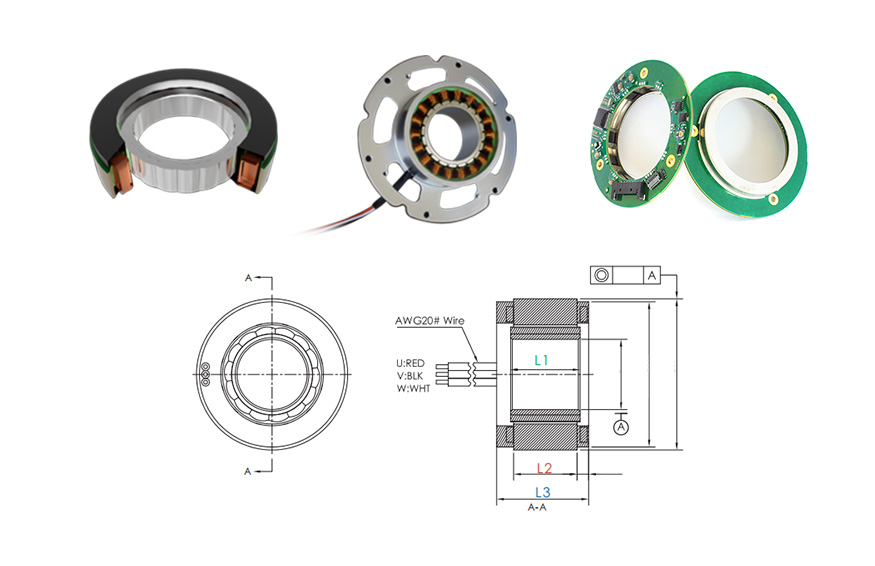
Tell Us about your requirements, and our application engineers will help you find the right solution today!











